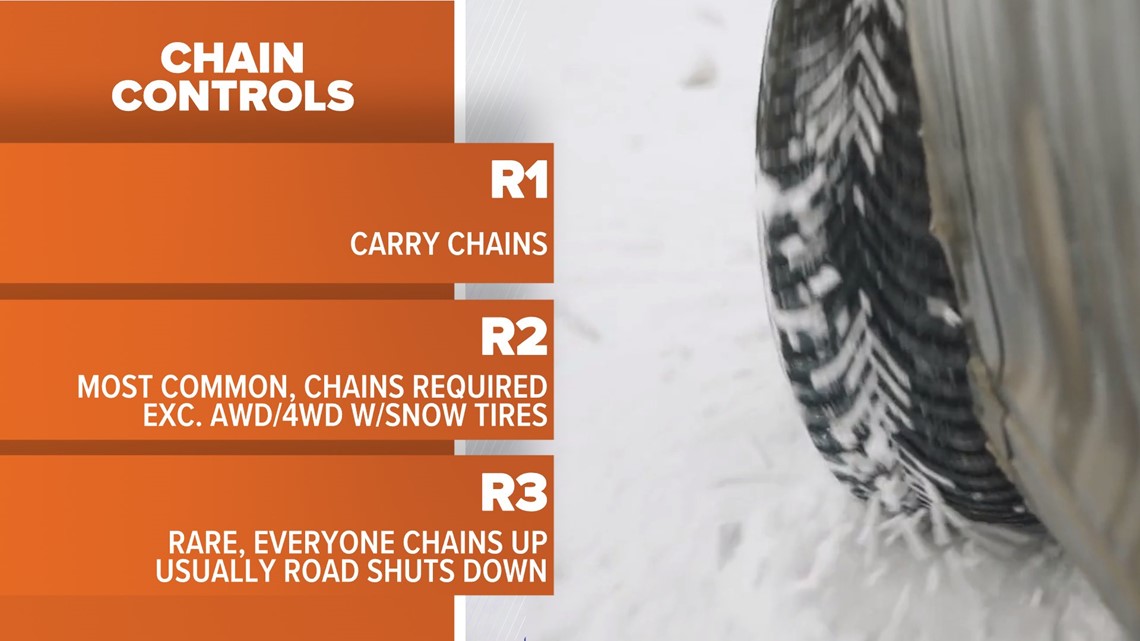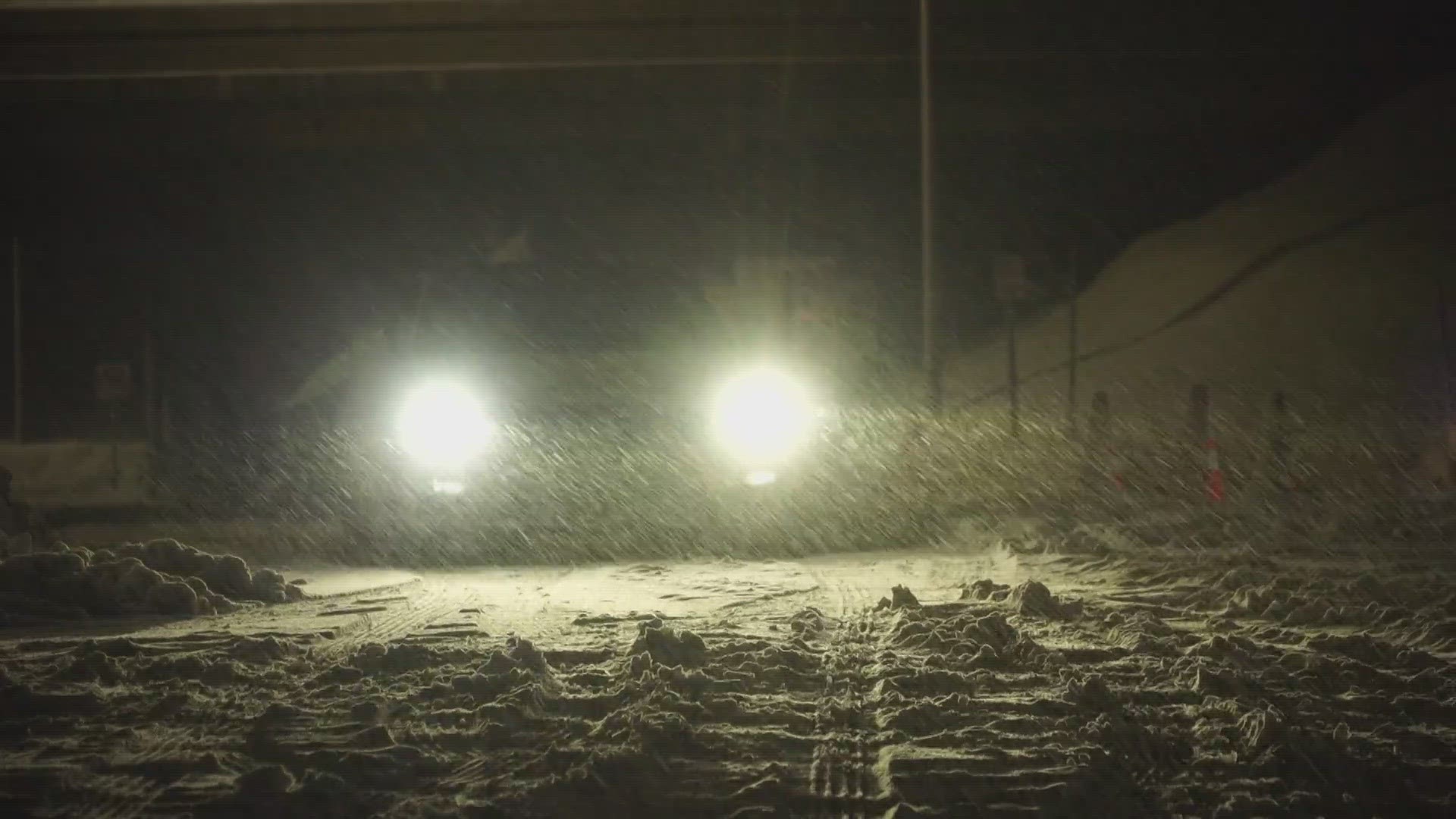SOUTH LAKE TAHOE, Calif. — When it comes to driving in wintry conditions, preparedness is the way to avoid further issues in the event of a breakdown or delay on the road.
South Lake Tahoe California Highway Patrol Officer Ruth Loehr said conditions can change at a moment's notice when you're driving in the South Lake Tahoe area.
Loehr suggests bringing blankets, a phone charger and hard copies of all the documents you may need in a roadside emergency, like insurance info. She said a physical map can be helpful too, as GPS systems sometimes don't work up there.
Dressing for the weather is essential. Proper shoes and clothing will make you better prepared and Loehr shares that she's seen people get out of the car in flip-flops during a snowstorm.
Another tip she offers is a simple but important one — slow down.
"We just had a collision the other day and the person did not realize it was 25 mph and chain control, and they thought 35-40 mph was safe enough to be driving on these icy roads. It definitely is not. If you are in a chain control area, depending on the route you are traveling, it's either 35 or 30 mph," said Loehr.
Loehr said in terms of problem areas in the South Lake Tahoe area, Emerald Bay can be an issue during winter because the road that runs through there can close for days at a time. She said that Highway 89 can close if there's a major storm or dangerous conditions like avalanche danger.
Loehr said another spot they see issues is on Echo Summit along Highway 50 coming in or out of the South Lake Tahoe area. They've seen everything from illegal parking and barbecuing on the side of the road, to sledding near the highway, which Loehr said is very dangerous.
There are several places to safely enjoy the snow in the South Lake Tahoe area.
What to know about chain controls
If you've ever driven through a mountain pass during the winter months, you are likely familiar with snow chains and traction control devices. In California, there are three levels of chain requirements according to Caltrans.
R1: Officer Loehr said this level is not seen too often and things will typically be light on the roads at this point, so carry the approved traction control devices.
R2: Loehr said this is the most common, usually seen when chain controls go up. This means chains or approved traction devices are required on all vehicles except 4WD/AWD (with snow tread tires on all four wheels).
Side note: She said these snow tires will be marked with things that indicate the type of tire. Some tires may read M+S, meaning mud and snow, or show an image of a mountain.
"Even if you are AWD of 4WD and you live in the city and you've got city tires on it, you're not going to make it through chain control with good reason it is absolutely unsafe for you to be traveling with tires like that in these conditions it just does not do you any justice so please check your vehicle ahead of time," said Loehr.
R3: This, according to Officer Loehr, is rarely seen, and oftentimes a road will be shut down at this point. R3 means everyone has to chain up, however, she said drivers of AWD/4WD vehicles are often told not to chain up. Loehr said to read your owner's manual to find out what to do for your particular vehicle.


She recommends that before you drive to the mountains, practice putting on the traction control device you need in your driveway or at home.
Click here to watch a video from CHP South Lake Tahoe for more winter driving tips.
Watch more on ABC10 | California Winter Storm: Snow Update, Jan. 10, 2024

















